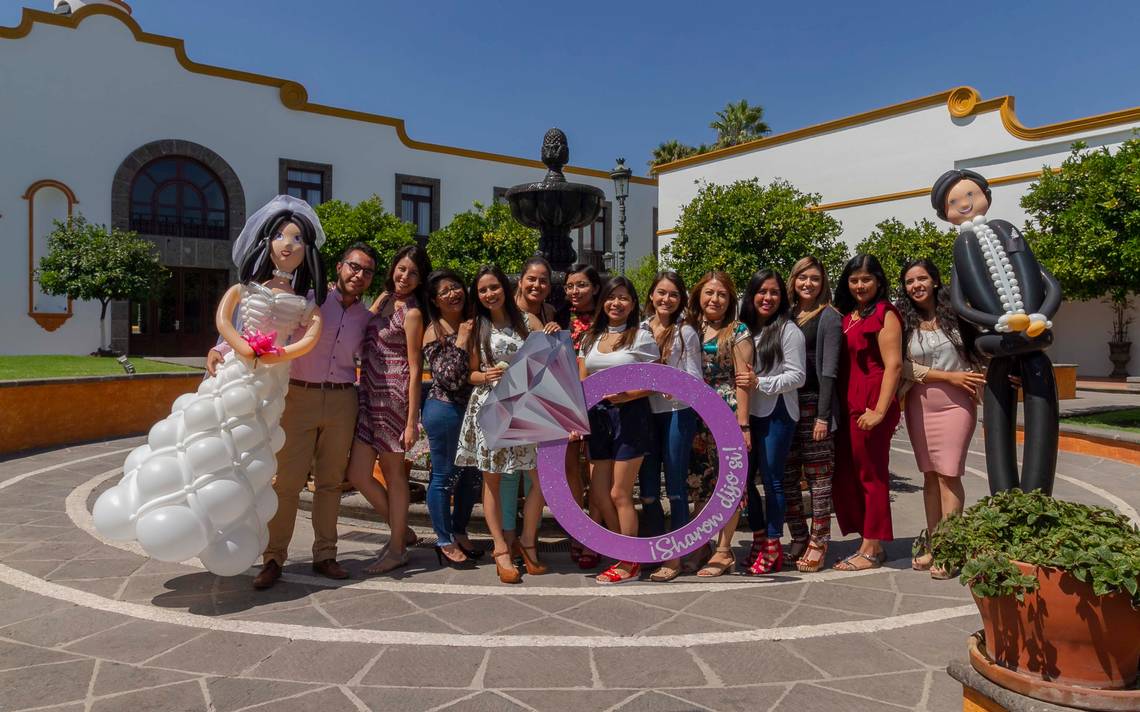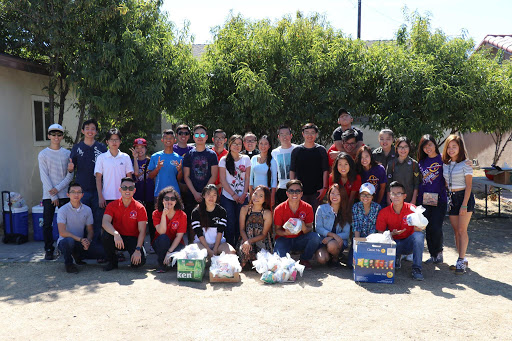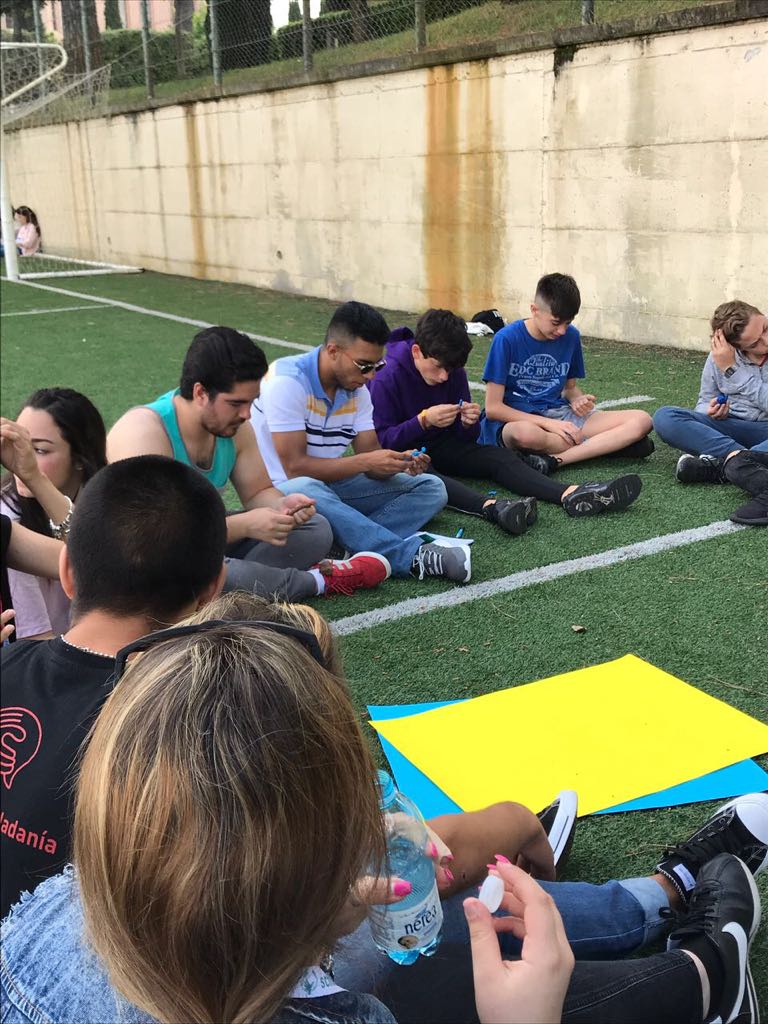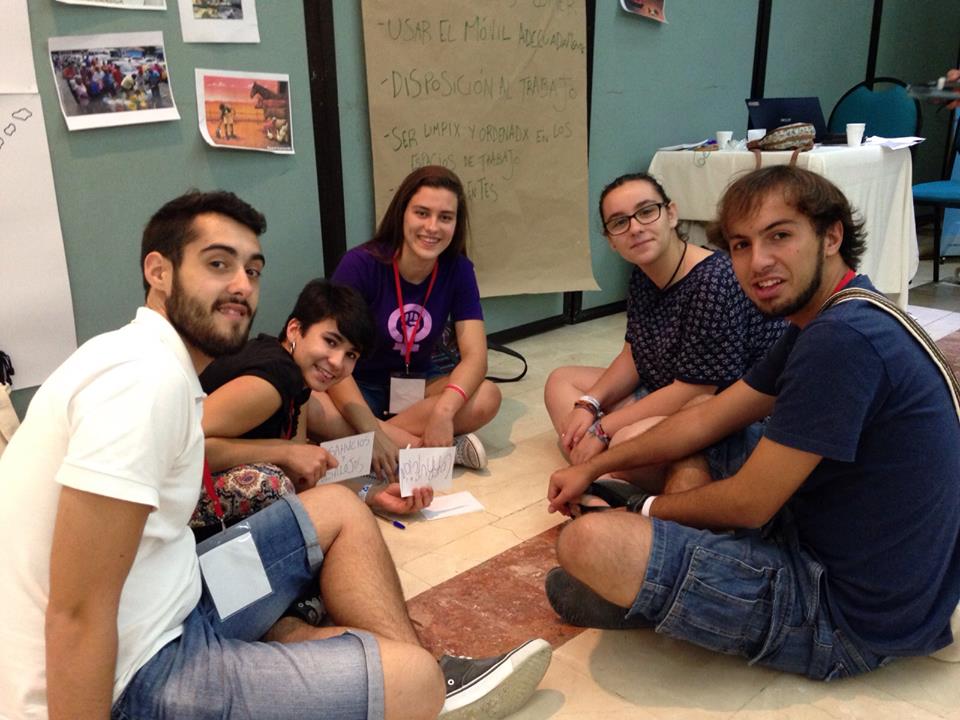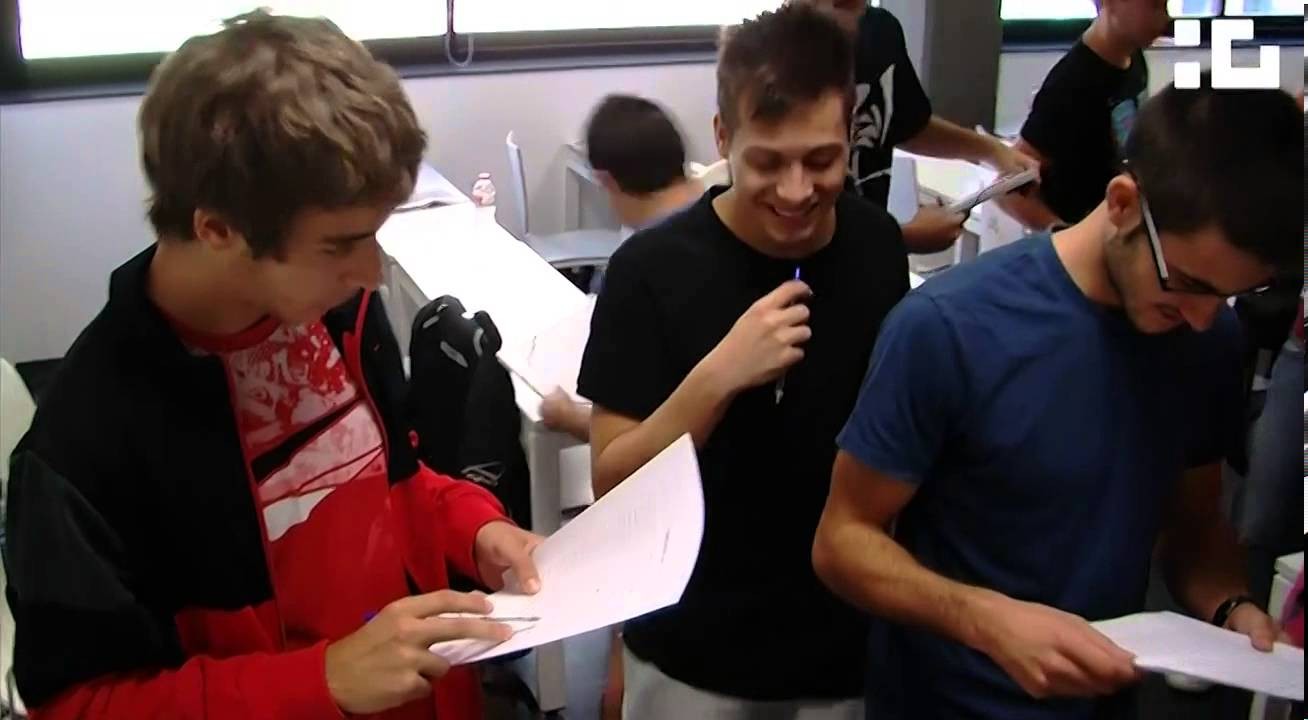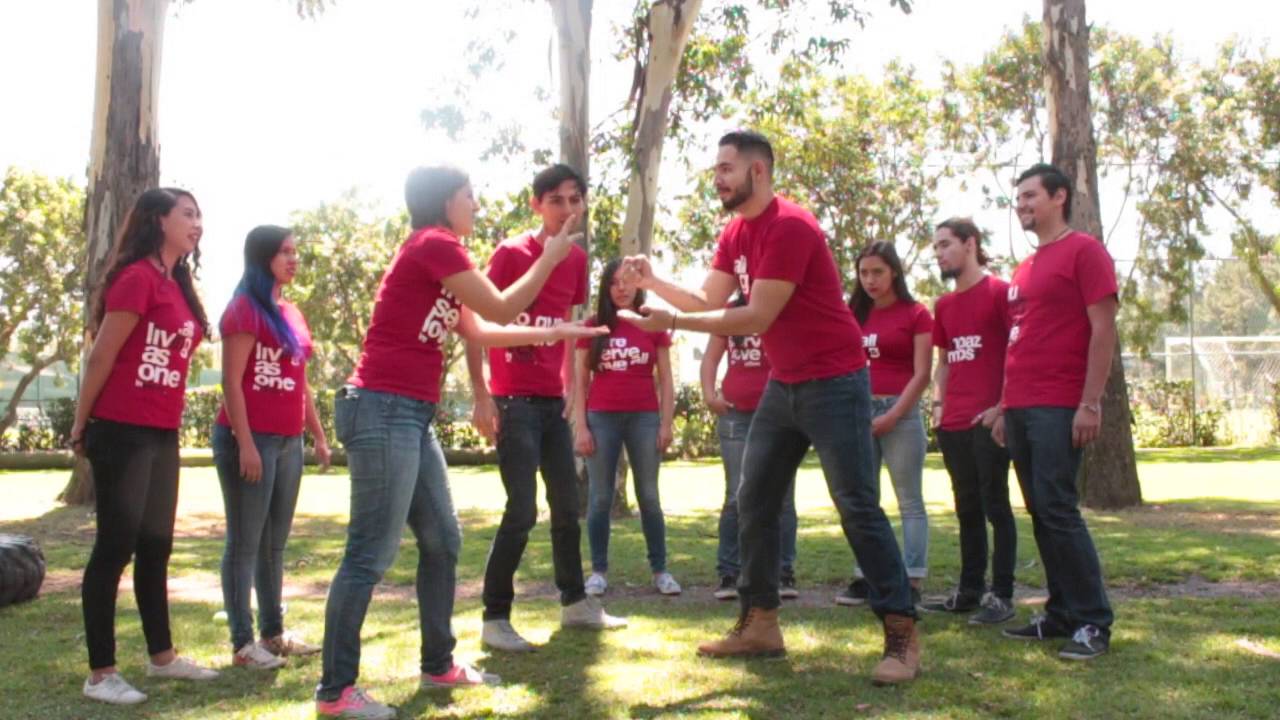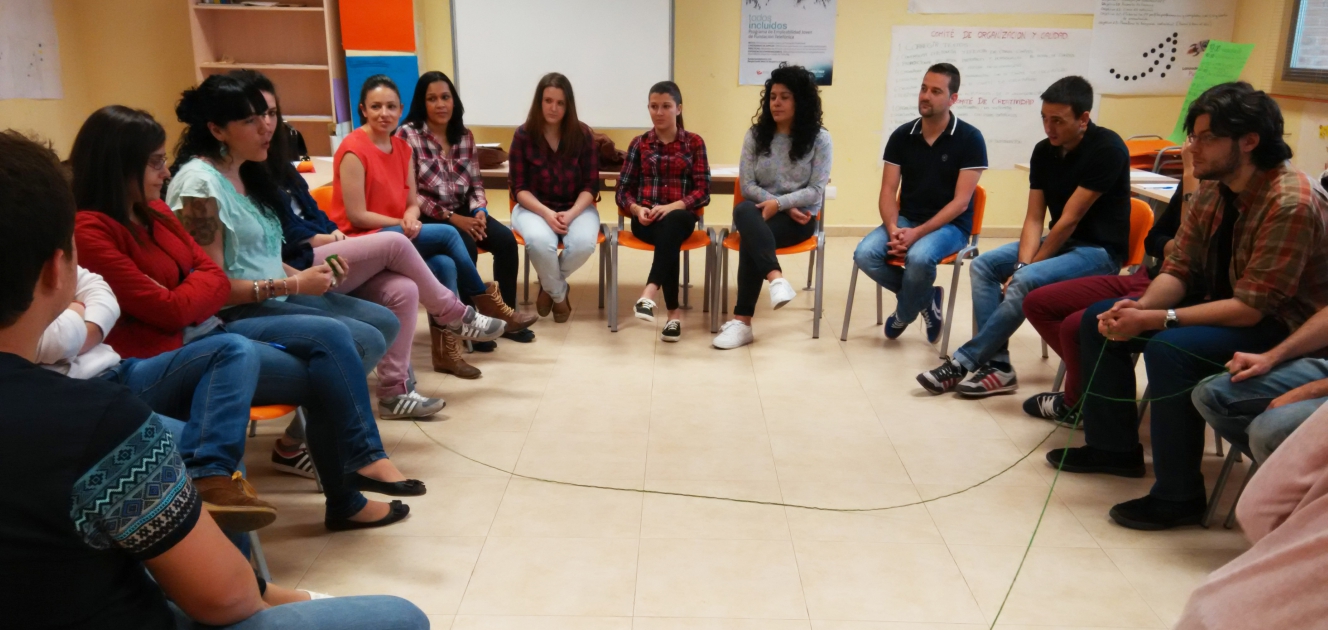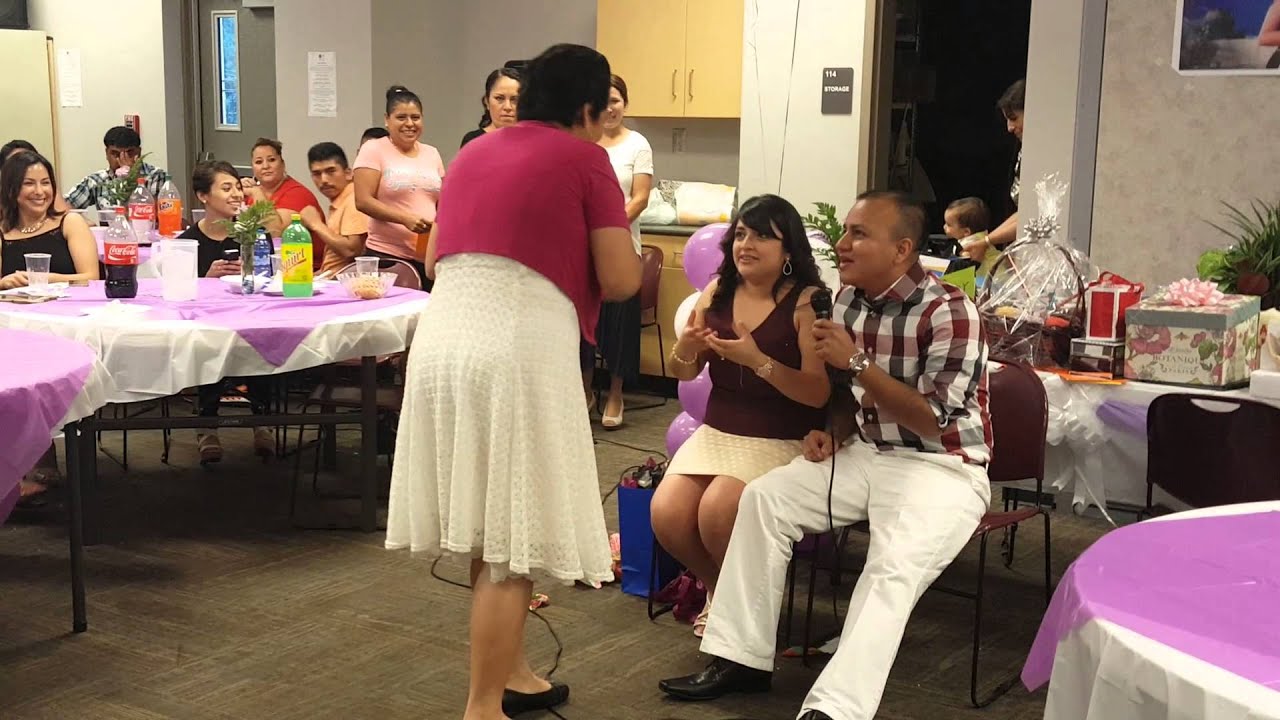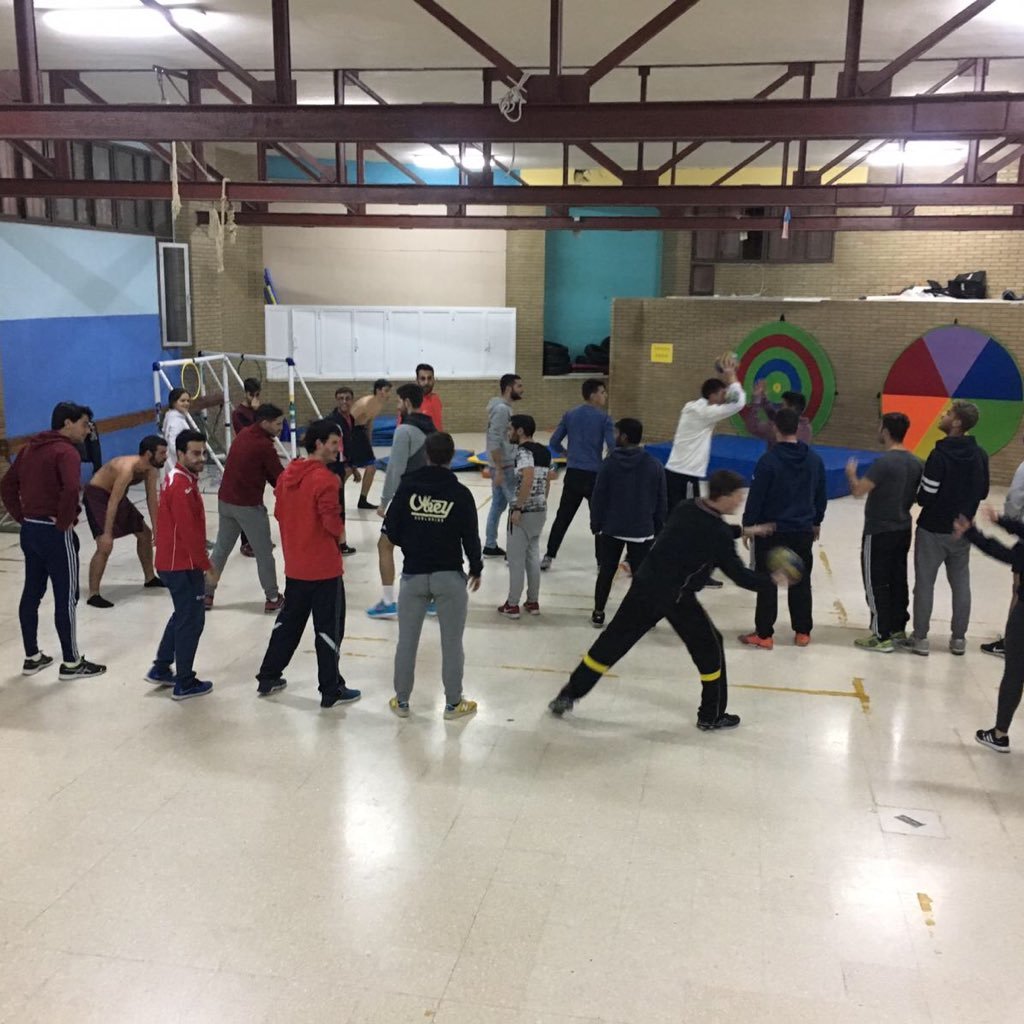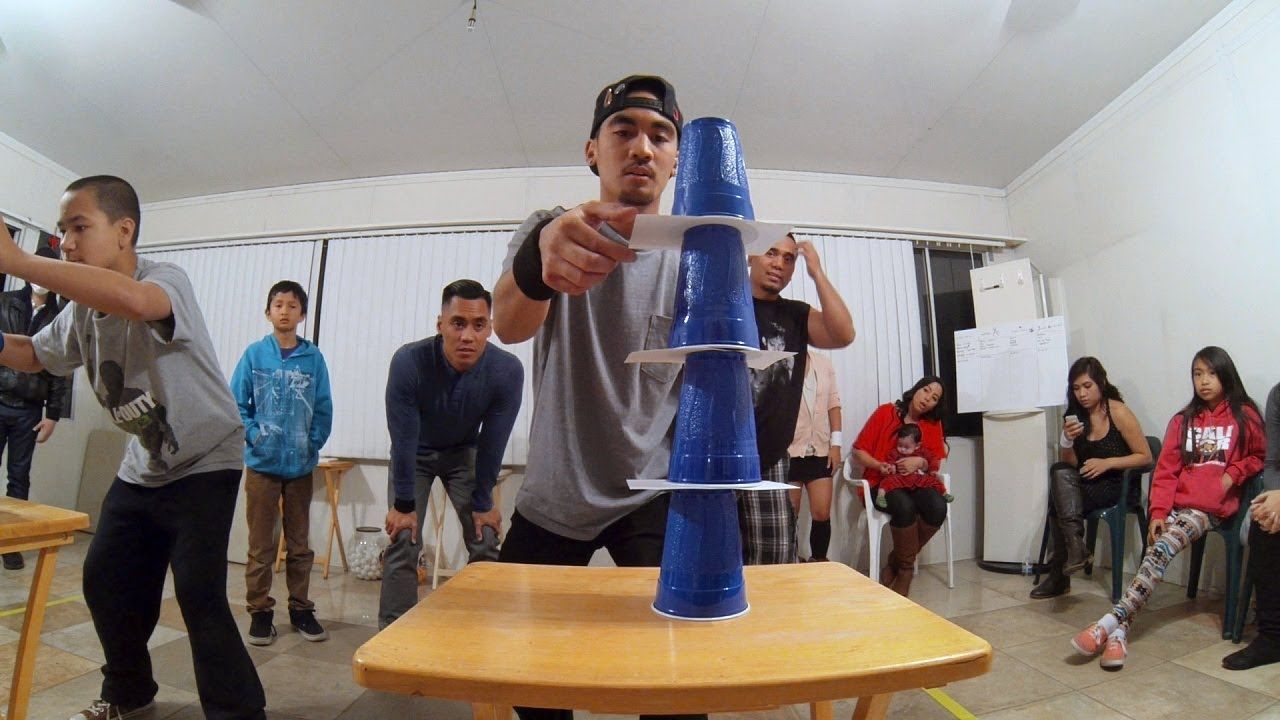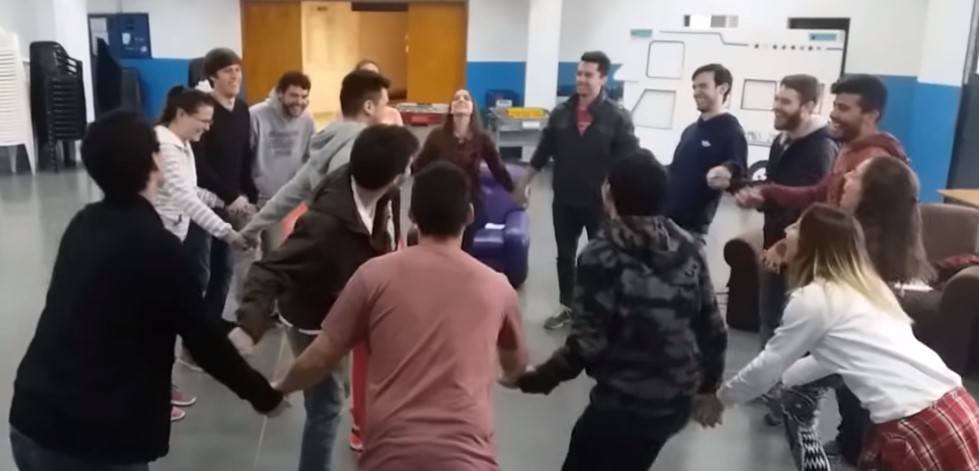When you attend a spiritual retreat, you must be certain that Dynamics for Evangelical Christian Vigils will take place there, which consist of a series of activities or group games, which will help you to get to know the other people who attended and also to help you visualize your problems or defects that you must overcome to become a good Christian, in this article we are going to talk about them.

Dynamics for Evangelical Christian Vigils
The dynamics are activities that are done in groups to achieve a certain objective, when we talk about dynamics to be used in Christian vigils, we are referring to a set of activities to first achieve that the group that is doing the vigil or retreat knows each other , establish a friendship, and at the same time have fun in the time that they are going to be together. They will help them to be more open to other people, who want to speak spontaneously and recognize what are the difficulties or problems that prevent them from doing certain things.
The dynamics can be used from children to the elderly, you just have to know how to determine which of them adapts to the group with which you are going to work on the vigil. Perhaps you are one of those who think that evangelical Christians do not have fun or do not need to do so to have a moment of relaxation, because perhaps you think that they only spend their time praying and asking God. Well, you will be surprised that it is not. The use of these dynamics or games can provide many advantages for groups to integrate, especially if they are starting out as evangelical Christians, since sometimes they think that they do not fit into these groups at all.
With the use of them, the unity of the groups and the integration into the church can be improved, so we are going to indicate what are those activities that you can do in an evangelical Christian vigil.
In the Bible the word watch is used to establish each of the parts into which a night is divided. David is one of those who is mentioned as keeping a vigil to meditate, already in the Old Testament four vigils are mentioned that should be done: the one at dusk, the one at midnight, the one at the crowing of the rooster and the one at dawn. Likewise, the activity of keeping watch or staying awake at night was called vigil.
The Centipede Race
This dynamic helps you to know the importance of working as a team, so that a common goal is achieved. That is why it must be seen that the church functions as the body of Christ, and if we want his kingdom to continue to spread, we must be united. With this dynamic we are going to put emphasis on working with other people.
The dynamic as such is within the category of teamwork and competition, and its objective is to encourage work, implement the organization and communication of the group, therefore we must form teams that have 6 to 10 people.
The dynamic is suitable for working with young people or adults, and its duration ranges from half an hour to a full hour. We must also have certain materials such as: scarves or strips of cloth so that we can tie the feet of the participants.
In this dynamic, 2 to 4 groups must be formed, so we must have more than 30 people, since if there are few teams, the dynamic becomes longer and each team must have the same number of people. Once the teams are formed, they must line up and choose two people to start the tour that we are going to mention below:
- The first two subjects must be tied at the ankles so that the legs remain attached. They must walk the distance that the facilitator of the dynamic chooses in an organized manner and return to the line again.
- Upon returning, they will take another person who will also be tied with a handkerchief or cloth by the ankle to make a horizontal row, and they will go the same route again, and then return to look for another person and so on until they take all the members of the group. group.
The winning team will be the one that manages to hold all the members of their team and make the round trip until the last participant of the same. The facilitator should then ask the members questions about how they felt doing this activity, if they found it difficult, and if they did not succeed, what do they think was the reason for their failure.
In this activity it is necessary to emphasize the way in which the groups organize themselves and communicate to tie up and walk along the route, in the same way the church works, without good organization and good communication this seriously affects the Body of Christ. On the other hand, when we set ourselves a goal, we organize everything and we manage to be in communication, the church is helped to get ahead.
You can do this game by making variations with a small group, and you can also give a prize to the team that wins to motivate them to continue in the vigil, another important fact should be done in a place that is large in space.
Say it singing
This dynamic can be done after a Bible class. This implies that people must invent the song to see if they learned something from the studied topic. If you are an outgoing person it will be a fun experience. It is within the category of animation and feedback and its objective is that the group has more encouragement and wants to review the topic that has been studied. It must be done in groups and no type of material is needed, it can be worked with small groups and with young people and adults.
Form groups of 4 to 5 people, who must take a Christian song and change its lyrics with the theme that has been studied, so that the participants feel motivated to sing the lesson they have learned, each team will have a reasonable time to write the lyrics and do a practice with the music, and then begin to sing it.
What is limiting me?
This is another group dynamic where you can reflect on the things that prevent us from developing our relationship with God and with other people. It is a dynamic of awareness and invitation for each participant to become more involved in many things in their life and in the church. Due to its theme, it falls within the category of reflection, since it allows a group to discuss issues, ideas or customs in our lives that have prevented us from getting closer to God.
You must make a circle and have materials such as tables, chairs, paper, pencils, it lasts half an hour and is aimed at young people and adults. Each person must be given a piece of paper and a pencil, the facilitator will ask a series of questions, and they must write their answers on the sheet quickly, they can be given a time that can be from 1 to two minutes, at the end of the time they must drop the pencil, each answer is individual, so it will not be possible to copy any of the people who are next to them.
Now, what questions can be asked? Well, easy, have them write their full name, write it using their opposite hand, write the name of 5 animals, 5 colors, draw a house, draw anything, something, etc. Of course, each of these questions has a motivation:
- Your full name: because the exam belongs only to that person and they are solely responsible for what they write or draw.
- Name written with the other hand: they will feel that it is difficult to write their name with the opposite hand, this teaches us that we have been used to doing many things in our lives in the same way, and that we are insecure about doing them differently way since we don't want to have more worries or more work. This teaches them that on certain occasions we must get out of our comfort zone, in order to grow spiritually, as people and continue to be part of the church.
- The 5 animals: most people will write dog and cat within the five animals, but in the other three they will place different animals, this indicates that each person has a different taste, a different mind, since we are unique beings.
- The 5 colors: in this part the same thing happens as with the animals, they will match certain colors. This tells us that each of us has a simple mind, since it is everyday, what is normally seen, is to follow the same routine to remain popular. But we must learn that being children of God, we must not do things because others do it, but we must also make a difference, sometimes go against the current.
- Drawing of the house: you should ask each of the participants to show how they made the house, and ask the following question: does the house they drew look like the house where you live? Most will surely say no. With the drawing you can do an analysis because they surely made a square house with a triangle-shaped roof, which is the model that is most learned.
With this question you can make them see that society has filled our minds with a way of thinking that does not conform to reality, you can also ask them to reflect that other things exist in society that have been imposed, and also within society. church. The ideal is that each person lives without following the guidelines of others, but rather following the guidelines that God has given us, since he has given us the gift of thinking and of continuing to be human beings to live in a society and be part of a society. church.
The idea of this dynamic is that the person knows that it is the concept of an idea and a custom, on which each one of them is based in our lives, and which ones have prevented us from following God's path and how to grow spiritually. This dynamic can make people demand many reflections on their lives and generate more questions in them. That is why if you are going to be a facilitator you must know the scriptures well, to help people understand that God's purposes in our lives are for the good.
Guess who it is?
This is a happy dynamic, where there will be a lot of laughter, and it serves to release the tension of the group, get rid of boredom or distraction. In the Christian church, not all meetings are formal, so if you want your group to feel encouraged, have this dynamic. It is an animation dynamic to help the group get out of fatigue, you must place the group in a circle and have sheets, pencils and a small container. It should not last more than half an hour and the group can be small or large, with young or mature people.
After you place the group in a circle, sitting on chairs, you give each one a pencil and half a sheet of paper, ask people to remember something funny or embarrassing that they have seen in church or outside of it, they should not put the name of the person who writes what happened, and at the end they must fold the sheet so that no one can see what each person drew. They are then placed in the container.
After they are all in the container, the facilitator must stir them, and then each one of them must take out a piece of paper, and say out loud what is drawn and guess who was the person who wrote it, and who the anecdote is about. If it is not discovered who wrote the note, the facilitator asks the person who wrote it to raise their hand. With each of the anecdotes that are read, it should be emphasized that we must have a heart ready for joy, since laughter is the beauty of the face.
This dynamic can be done with a group that is already known, since in this way there are more possibilities to quickly discover who is the person who passed through that moment and to know who wrote it, since if the group is new they will not know of the people around him and there is no confidence to write anything to live this experience.
Let me help you
This is a dynamic of support for Christian brothers and also for friends, especially for people who believe they are self-sufficient and do not need anyone else to live and get ahead, even if they are going through many difficulties. But in reality it is that all people need the help of others, support at some point in our lives. This dynamic is good for people to reflect on this topic.
It is a teamwork dynamic, this must be placed in a circle and as optional material they could use a bandage, it should not exceed half an hour to do it and it can be done with 5 or more people who are mature. To start the dynamic you must say the safety rules for all the participants, the circle must be made and one of the participants must stay in the center of it, he must close his eyes or a blindfold is placed on him, and he must cross his arms on the chest. If there are many people, it would be advisable to make two circles to do the activity.
The other participants must make the person in the center feel confident and take care of his integrity since he cannot see anything, the people in the circle must get as close as possible to the person in the center since he must drop back, so that those behind her hold in their arms. Those who are around the person must place the person in the center in the correct position to drop, the group must determine how many people will have to catch it, and this will depend on the physical structure of the person.
When the signal group this person drops completely, and must have the confidence that the people behind him will support him. After this person does the activity, it can be done by as many people as they want. The facilitator should watch for the person in the center to drop confidently without leaning on other people or holding hands. When he sees that one of them is unsure about doing it, he should encourage the participants to trust the person more.
Once the activity is finished, the facilitator should ask questions so that the group reflects on how they felt from the moment they were in the center of the circle, how they felt the experience of falling down, and how this can be related to the problems what we have in life. At the end you can read Ecclesiastes 4:9-10: it is better to live two together two together than one alone, because that way they benefit from more work, because if one falls, the other will immediately pick him up, but poor who walks alone and falls, because there will be no one to pick him up.
This is a reflection that is made so that we know that there are moments in life when we like to be alone, but that decision can be very heavy for neutral backs, since we cannot continue advancing, God tells us that it is important to help and leave that someone help us and accompany us in our lives. In the same way those people who supported their companions will feel confident to help those who are in times of need or trouble.
my life in a drawing
This is a dynamic for those groups that are forming for the first time, that is, it serves to break the ice of communication barriers. Since each of them will be able to talk about personal things. It is within the category of breaking ice, integration and knowledge of the group and it seeks to generate trust and interaction between the participants so that they get to know each other.
You need sheets of paper and colored pens or markers, you can make pairs, or teams of four of 8 depending on the number of people. Its duration is 40 to 50 minutes, and it can be applied to young people and adults who meet for the first time in a retreat. And it must be done in a place that has tables and chairs to carry out the activity.
First, you must organize the participants in pairs, which will be given a sheet of paper and a pen or pencil each, the sheet must be divided into three parts or columns that correspond to the past, present and future. In each of them, people individually must draw a drawing that represents each of these stages and in the last one draw what they would like to be in their future, they must give a reasonable time to do it and they must then share what they did with the pair that was assigned to him.
This couple will later have to look for another member to tell him what his drawings mean, so a quartet will be formed there, and this quartet will look for 4 more people to do the same, so it will already be a group of 8 people with the that their experiences and dreams will be shared. Then the facilitator will listen to the experience that the participants felt when listening to the stories of others and that they will listen to theirs, there they will be able to see that many people will have things in common, others will have been interested in something that has happened to a particular person and It will create an environment of trust in them.
Finally, the facilitator should congratulate everyone for having collaborated by saying a part of their lives, and that this climate of trust that has been created continues in the remainder of the retreat or the vigil, so that new companions and friends arise.
baloo the bear
This dynamic consists of giving words of encouragement and encouragement to other people, who are going through a bad time or due to some need, it can also be done just to listen to someone what is happening to them so that they feel that they have support in a friend. A word of encouragement or encouragement at the right time helps a lot to reflect on how important these words are.
The dynamics is framed within the categories of awareness, so that positive sensations and reflections on the words that we can say at certain times are generated. The group must be placed in a circle and a teddy bear is needed, it should not last more than half an hour and it is done with adults. The first thing to do is introduce the bear to the members and start telling a story about the bear where he has had a problem, the activity should be started by the facilitator and then the bear should be passed on to another person.
Each of the people must tell the bear words of encouragement and encouragement in the face of the problem that arises, for this they must take the bear and speak to it as if it were a person. When all the people finish, they must say the same words of encouragement that they said to the bear to the person who is located to their left. When everyone has finished, they can read some proverbs that have to do with the gift of language so that people can see that a good word to a person who needs it can help them get out of a problem or motivate them to continue go ahead. (Proverbs 12:21, Proverbs 15:4, 15-1 or James 3:5).
bible fencing
This activity can be done with groups of all ages, this is an activity that is done very frequently in Christian churches and in various events and meetings, its name comes from the sport of fencing where two people who are going to face each other a sword, in our case the sword that we will use is the Bible.
Before starting the dynamic we must quickly find a bible, there must be at least two people, up to a maximum of five, each of them must know and know the Bible, that is, how it is used, and where they can find passages of the Bible. bible in a quick way. The groups must have the same ages, children, adults, youth; as we cannot put a child with a youth or an adult.
We make a list of Bible verses of at least ten of them, this can be done by the facilitator of the activity, and we put the members in a row, each one of them with their Bible in hand above their head, the first of them must find the first verse, which the facilitator will say, for example John 3:16. Once you say it you must shout the word “Fencing”, and then the participants must quickly look for it, lowering their bibles and searching.
You cannot lower your arm before you say the word fencing, the first one to find it must immediately shout Fencing and read it, winning the first round that team, now if they read the verse but have not shouted the word fencing Your point is invalid. The facilitator must verify that the text being read is the corresponding one, and that the person has not mistaken the quote. The group that earns the most points is the winner.
You may think that this game is about speed, but it is not like that, it is about who knows the bible better, and how it is organized. If you're going to do it with kids, don't tell them to look for a specific quote, but rather find a specific book, since they don't know how to handle it yet. Now if it is a group of adults who already know it well, who are experts looking for books and verses, you can make the game more difficult, so that they find more complex biblical quotes or in books that sometimes are not the most used or read.
Or also tell them the quote or verse from the Bible and have them tell you which book it is from, if you see that it gets too complicated, give them clues such as giving details of who wrote it, if it is in the old or new testament, until they find it. Another variant that you can use in this dynamic and that can be a little more animated is to give them a specific topic and that they are in charge of finding a verse in the Bible that is related to the topic.
An example of it is to say, for example, the theme is Love, and that they look for verses that talk about it, in this type of case the person must analyze the text they read to see if it really has to do with the theme. what you have handled or said.
barriers to communication
A dynamic that deals with how to maintain unity in the church, can be used when the group with which you work in the vigil is very large, and there may be many problems communicating with each other. Many of these problems can also be seen inside a house, and they are really easy to solve, if we believe in Christ we will learn to communicate in a better way and understand the points of view of other people, it can also help you can have a good communication with other members of the church and also with God.
If you are a leader in the church or a very qualified member of it, you will be able to easily determine this problem in the church, and then it is a good occasion for this dynamic to be done and help the other members to reflect on these inconveniences to communicate and thus invite everyone to try to leave those barriers aside, so that it continues to remain in unity.
This dynamic is from the category of personal communication, and the barriers we want to identify and eliminate are distance, power, not having eye contact with other people, avoiding noise in communication and taking better body postures to communicate. It must be done in pairs, and you need sheets of paper, pencils or pens, a cell phone, and chairs. Its duration is approximately one hour and it is, as we said before, to be used in adults.
The group should be organized in a circle and then they should be asked to see all the people around them, and they should choose one of the people there to talk with for one hour. When everyone is paired up, they will be given a time of 5 minutes to answer questions that the facilitator says. Each time the question is changed, the couple must adapt to the position indicated by the facilitator.
Let's give an example, suppose you ask what is the dream or goal that each one has and that has not yet been fulfilled in their lives and why they think they have not achieved it, for this question they should be in front of each other, look at each other to the eyes and begin to give their answers one first and then the other, and the estimated time to respond is approximately five minutes. Here we leave you an example of some questions that can be asked.
- What dream or goal did you have and you have not been able to fulfill it in your life and why do you think you have not been able to do it. (Here both people must be facing each other)
- Where you would like to spend the best vacations of your life (must be back to back)
- What is the biggest embarrassment you have experienced (the position should be one sitting on a chair and the other sitting down on the floor looking at him, and then they change positions)
- What do you think you will be doing in about 10 years (both should stand shoulder to shoulder)
- What do you dream about the most (here a person must be writing on a sheet of paper with a pencil, or pretend to do so while the person answers the question, and then they change positions)
- What are the things that cause you the most annoyance or displeasure (here the couple must be distanced from each other, about three meters or so, but continue with the conversation)
- If you were a millionaire or won the lottery, what is the first thing you would do? In this part, the members must have a cell phone, where one will first answer and when finished, pass the phone to the other person to answer.
At the end of the dynamic, all the people should stand in a circular position again and the facilitator should ask everyone questions to reflect, emphasizing whether there was communication between them, what they agreed on, which of the questions was easier for them to answer, if Have you ever talked that way with other people and, above all, what are the barriers that you think you have had in your life and that do not allow you to have a good communication.
Based on the answers made by the group, reflections are made on what are the communication barriers that arose in the group and that they know that because of them they cannot have an advance or achieve any goal within the church, surely the ones that most affect you. They mentioned the lack of visual contact with other people, the noise, the positions and especially who had more power over another.
With this talk among the group, a call to conscience can be made about why it is important that we have good communications within the church, since this avoids gossip and gossip, which create misunderstandings that do not allow the work of God continue, as they do not facilitate unity and working in harmony. When we fail to establish good communication, we cannot have one with God either, since we will never be able to hear his voice and his indications.
The advantage of this dynamic is that you can place other questions, the ones we gave you are just a suggestion, as well as the positions in which you place the couples, so you need a place with a lot of space, if it is a large group. to be able to distribute them freely in it.
Lets introduce ourselves
This activity consists of making a presentation of the people who make up the vigil group. It should be done in a circle to greet each other and ask questions, it can be done in groups where there are young people, who are in a camp, in a cell or in a conference. As questions should be asked, these can be of your creativity, since the idea is that people get to know each other and share information about themselves so that they get to know each other in the group.
You must have music as support material and the list with the questions should not exceed half an hour, and the activity is adapted to groups that range from medium to large, and as it is for presentation, it is done in groups that are completely new. To start it you must make two groups that must make a circle each, each group must have the same number of people, but there must be a circle inside another and the members must turn around to face each other.
You must place the music or song and while it is playing, the two circles must begin to turn in opposite directions, one goes to the right and the other to the left, at the end of the music or stop it, one person must be facing another, and the The facilitator will ask them to shake hands with each other, say their name and begin answering the following list of questions:
- Pastime that you like the most
- What is your favorite Bible character?
- If you had him in front of you, what would you ask him and why?
- What is your favorite word and why?
- To know that you only have one month to live, what would you change in your way of living?
- In three words, how do you describe yourself?
- What is your favorite passage in the Bible?
- What is more important to you in a friendship?
- What would be your favorite vacation and where?
- Who is your best example to follow?
- What is your best childhood memory?
- What is the most painful moment of your life?
Give each of the questions a reasonable amount of time so that the answers are shared, then let the music play and let the two circles turn again in the same way as the first time, so that a different partner touches them, in each one of the questions, of course if it is a different colleague they should greet each other again and say their name, but if the first time they greeted each other with their hands, in each following question they greet each other with another part of the body (elbows, fingers, foot, shoulder , hug, accolade) and so on until the list of questions is finished.
The questions can be the ones that we indicate or put others that come out of the creativity of the facilitator and that suit the group that is getting to know each other, and you must pay close attention to the time to answer the questions so that the activity does not get too long. Remember that the reason or objective of this activity is for the group to get to know each other, break the ice and start a conversation later, this also allows that when they meet in church they can start a conversation in a pleasant way.
the tallest tower
It is an activity indicated for groups of all ages, it is in the category of cooperation and teamwork and that the importance of wanting to fulfill a goal or objective within the church is recognized. Groups of 4 to 5 people should be established and you will need a package of long raw spaghetti, a bag of chocolates or candies and a timer. The activity should last from half an hour to a maximum of 40 minutes.
It is wanted with it that the importance of the church for God be known, because it was formed, because he wanted them to worship him and what is the mission that must be fulfilled with it, which is to make more disciples in all nations, also that the goals of the congregation where you attend or of the cell be known. Each goal, objective and path is not done alone, it is necessary to have the help and support of other people for a church body to function, that is why it is never too late to work alongside our brothers to unite as a group and do May it continue to grow with strength and do what God wants us to do.
That is why with this dynamic you will be able to make many reflections on this topic of unity and teamwork so that you can see how success can be achieved by working in this way. For this reason, you should divide the group into four or five people and give them a reasonable space to accommodate the materials and carry out the activity. Each group should have 20 raw spaghetti strips and 5 marshmallows or chews (you can also use bubble gum).
Each group is given the indication that they must make a tower with the material that they have been given, and they have a maximum time of 10 minutes to do so, and that the tower must remain standing for a maximum of 3 seconds so that the take the task as valid. At the end of the time, the facilitator will begin to see the work done by each team, and at the same time begins to ask them what strategies they used to make the tower, what was the most difficult for them and if they failed what they lacked to succeed in the task .
At the end, he will ask them to reflect on this dynamic and how it is similar to the church of Christ, comparing the tasks that Jesus gave his disciples to form and grow. And show them that a church is a single body that has several functions that must be fulfilled so that it can move forward into the future and fulfill the will of God. It also serves to emphasize points such as what type of communication they had between them, how was the collaboration, if they did them together, if they were persistent in forming the tower, the depth of the activity is left to the facilitator.
circle of virtues
This activity is in the category of assessment of self-esteem and sensitivity, and its purpose is to make each participant accept himself, to discover what his qualities are, to appreciate himself, feel confident and reflect on how he is seen. For other people. It is used in a group of young people or adults who are in a difficult stage since they have negative thoughts about their personality, their body and their appearance, many think that they are useless in life, that they have no goal to obtain, or that they are old and that their useful time has passed, or that they can no longer do anything productive.
This dynamic is very good for this type of people who believe that their virtues are diminished, it helps to grow trust and love in each of the participants so that they reflect that they can still give more of their lives, the group must be placed in a circle and you will need white paper and pencils and should last between 20 to 40 minutes. The facilitator of the group orders them to make a circle and to sit on chairs and if there are tables better, so that they have a place to lean and write.
Each participant must have a sheet of paper and a pencil, they will write their names on it and then they will pass the sheet to their partner who is on their right, once they have done so, they must explain to them that they must write two or three qualities, capacities or virtues that they think the person whose name is on the sheet has, and then they will go back to the next person to the right to write three more qualities, and so on until the sheet returns to its owner.
At the end, each person will read the qualities that have been written on their sheet or the capacities or virtues, the facilitator can intervene to give a reflection of what they have written to the person and emphasize that their value is not found in age or appearance you have but what is in your heart. That is why it is necessary that this activity be done in a group that knows each other or that they have been interacting for some time, and you can also put a very soft background music to do it.
The Bible teaches in Job 12:12 that knowledge is found in the elderly, and understanding is in the age. The latter is acquired over time, since sometimes when we are young we do not have the intelligence to do certain actions, since we are impulsive, but it is time that tells us what we should do and what is the correct way. to do it
Decipher the secret message
This is a dynamic that can be done in meetings that are not so formal, in young people of the church, to introduce a topic that you want to communicate and that you want to share in a conference, study, vigil or spiritual retreat. It is an easy dynamic to do and does not require much time since we only seek to teach something, a specific topic, make a good reflection that is important for everyone because it is very deep in its content.
As we said, it is a communication therapy with which you want to express a message through a communication that will not be verbal. Two or more teams must be made, and sheets and markers are needed, it must last more or less 20 minutes, each group can have 10 participants, but the important thing is that they all have the same number of people and each group must stand in a row. . The facilitator should tell the last person in line to draw a simple drawing (house, flower, tree, car, figure, etc.)
This person must make a stroke on the sheet, settling a little on the back of the partner in front, and then pass the sheet to that person who will make another stroke and so on until he reaches the one who is first. This first person is the one who must say what the final result of the drawing of the sheet is. All drawings will be reviewed and the person who comes closest to the original message given by the instructor or facilitator.
This dynamic can be varied by making mimicry instead of drawings to say the message, imitating a character from the Bible, a parable or a story that you want to share with others, but that the other groups must decipher. This dynamic should be used with groups that are mature and that know each other since in very young people it can be uncomfortable or they do not have the necessary confidence since they do not want to have physical contact which is necessary to do the activity.
Don't put out the match
This activity is a dynamic that deals with biblical texts, and serves to achieve relaxation, get out of the routine and the daily rush that causes a lot of stress. It serves to encourage the people of a group that is gathered regardless of age, since what is wanted is that it reorients its attention towards the purpose of the meeting, and to make an interval of various activities.
It is a technique of the animation category that serves to relax the group, a distribution must be made in a circle and we need big matches. It requires 15 to 20 minutes to complete and 10 or more participants. These can be seated or standing and the facilitator must bring the big matches so that they last much longer lit, he must light one and give it to a member of the circle, who will pass it to the person on his right saying: " I am giving it to you lit, and in this way you will give it to another, if it goes out in your hand you must say a verse from the Bible.
When this goes out, the person who succeeds him must say a verse from the Bible. That is why it is important that the participants know how to handle the bible so that the same verses are not repeated, the space where it is done must be closed so that there is no breeze, to prevent the match from going out, birthday candles can also be used They are small and don't last long. You must ensure that there is nothing nearby that can catch fire, so as not to have accidents, or that at a certain time they must be turned off so as not to burn your fingers.
Other topics that may interest you are these that we mention below:


